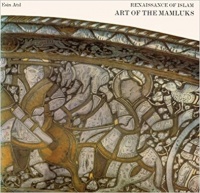categories
- Traffic and Vehicles Catalogue
- socreal.catalog
- Advertisement Catalogue
- Photo Catalogue
- Chinese and Japanese Catalogue
- New Holy Card Catalogue II.
- 12 interesting old books
 Books
Books
 Bibliophil
Bibliophil
 Antiques
Antiques
 Engraving
Engraving
 Maps
Maps
 Photos
Photos
 Antique Papers, Small Prints
Antique Papers, Small Prints
 Posters
Posters
- Circus
- Modern Graphics
- Socialist Realism
- NER Propaganda
- Others
cart
Cart is empty
You've not logged in
Atil, Esin : Art of the Mamluks
- description
- additional information
Renaissance of Islam
The Mamluk sultanate (1250–1517) emerged from the weakening of the Ayyubid realm in Egypt and Syria (1250–60). Ayyubid sultans depended on slave (Arabic: mamluk, literally “owned,” or slave) soldiers for military organization, yet mamluks of Qipchaq Turkic origin eventually overthrew the last Ayyubid sultan in Egypt, al-Malik al-Ashraf (r. 1249–50) and established their own rule. Their unusual political system did not rely entirely on family succession to the throne—slaves were also recruited into the governing class. Hence the name of the sultanate later given by historians. Following the defeat of Mongol armies at the Battle of ‘Ayn Jalut (1260), the Mamluks inherited the last Ayyubid strongholds in the eastern Mediterranean. Within a short period of time, the Mamluks created the greatest Islamic empire of the later Middle Ages, which included control of the holy cities Mecca and Medina. The Mamluk capital, Cairo, became the economic, cultural, and artistic center of the Arab Islamic world.
Az utolsó lapon és a hátsó borítón kisebb szakadással.
The Mamluk sultanate (1250–1517) emerged from the weakening of the Ayyubid realm in Egypt and Syria (1250–60). Ayyubid sultans depended on slave (Arabic: mamluk, literally “owned,” or slave) soldiers for military organization, yet mamluks of Qipchaq Turkic origin eventually overthrew the last Ayyubid sultan in Egypt, al-Malik al-Ashraf (r. 1249–50) and established their own rule. Their unusual political system did not rely entirely on family succession to the throne—slaves were also recruited into the governing class. Hence the name of the sultanate later given by historians. Following the defeat of Mongol armies at the Battle of ‘Ayn Jalut (1260), the Mamluks inherited the last Ayyubid strongholds in the eastern Mediterranean. Within a short period of time, the Mamluks created the greatest Islamic empire of the later Middle Ages, which included control of the holy cities Mecca and Medina. The Mamluk capital, Cairo, became the economic, cultural, and artistic center of the Arab Islamic world.
Az utolsó lapon és a hátsó borítón kisebb szakadással.
| condition: |     |
| category: | Books > Foreign Language Books > Books in English > |
| category: | Books > Arts > |
| category: | Books > Arts > Applied Arts > |
| category: | Books > Arts > Art album > |
| publisher: | Smithsonian Institution Press, 1981 |
| item number / ISBN: | 0045632 |
| binding: | paperback |
| pages: | 286 |
| language: | English |









 Telefon:
Telefon: E-mail:
E-mail:







